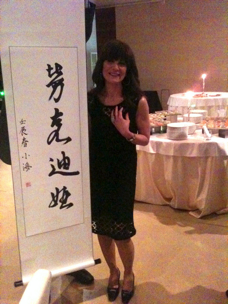
April 2012
For my friend Claudia's birthday I decided to go overboard and prepare a large-scale work.
For birthdays I often like to go to the person's name root (for example my own name, Paolo, comes from a latin word for "small", "humble" so it could be rendered, for example, as "謙遜").
This was the first obstacle. Personally I think that Claudia is a beautiful name, but unfortunately its roots are not very good for a Japanese calligraphy.
The next best choice, when "name root" is impractical, is going for a phonetic rendition. Unfortunately again, Japanese language has problems with the "L" letter, so the best I could hope for would probably be something like " Kuro-dia". And I would have to use Katakana which I am not very fond of.
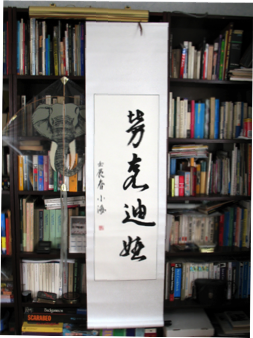
克(Kè)
勞(láo)
迪(dí)
亞(yà)
Take note that the various ideograms have a specific meaning in Chinese (actually many different meanings, because the same ideogram can represent a noun or a verb, often with completely different meanings… just as an example, the first character may mean "gram; subdue; to restrain; to overcome")
[Click here for a bigger image of the scroll]
They have some meaning in Japanese, too - even if nobody would use these together:
克 overcome; kindly; skillfully
勞 thank for; reward for
迪 edify; way; path
亞 rank; follow
克 overcome; kindly; skillfully
勞 thank for; reward for
迪 edify; way; path
亞 rank; follow
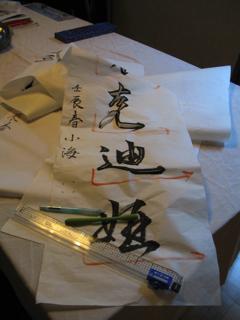
The last part is not easy, and so far I had it done in China, which means having to send out the calligraphy months in advance - and making a Kakejiku is no easy task, as you can see from this photoshoot.
The point is that while I own a couple of "mounted" blank scrolls (these can obtained relatively easily online) the normal process, at least at my current level of ability, is to practice a lot, creating tens of different calligraphies and finally choose the best one as a gift.
In this case, I had to be sure that the final attempt was good enough because I had just one scroll and no time to get spares.
This is, in a sense, an example of "一期一会" which made me a trifle nervous.
My teacher kindly provided a Gyosho example to work on (I often ask for her help, especially for important works) and I practiced a lot before setting the brush on the actual scroll and I took some extra precautions to ensure a decent result, including setting some reference lines with a pencil in order to keep the characters properly balanced.
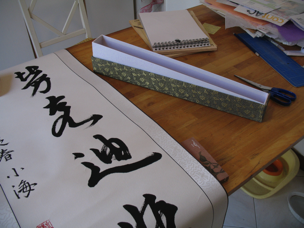
Kakejiku should be set in special "alcoves" and may be replaced according to season, holidays, to greet a guest and so on. Therefore they were designed to be rolled up and put away in boxes like this one.
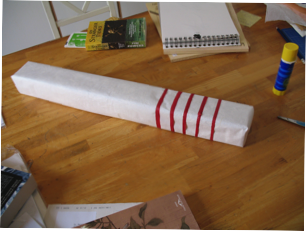
Just a simple white paper wrap with 5 red stripes to subtly hint at what we were celebrating.